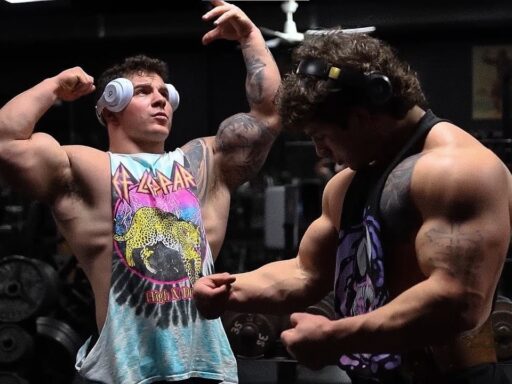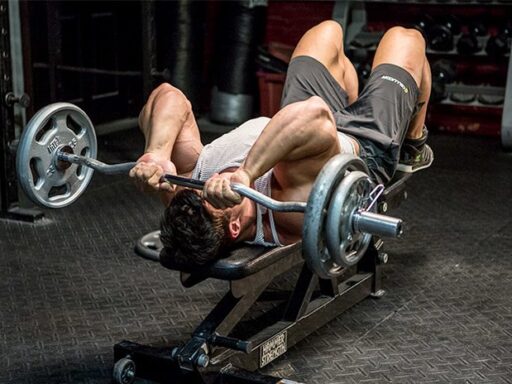- What Do Deadlifts Work and Benefits of Muscles?
- How to Perform a Deadlift Correctly
- Benefits of Deadlifts
- Do Deadlifts Work Back and Glutes?
- How Deadlifts Can Benefit Your Hip Dips Workout
- Deadlift Variations to Try
- Proper Deadlift Form: Avoid Injuries
- What do hex bar deadlifts work?
- Trap Bar Deadlift: Muscles Worked
- Hex Bar Deadlift Muscles Worked:
- Hex Bar Deadlift Benefits
- Frequent-Asked Questions About Deadlift
- Conclusion
Deadlifts are one of the best exercises for strength building and increasing one’s fitness index. But have you ever wondered which muscle deadlifts actually work? Irrespective of whether it targets the back, the glutes, or the hip, it is important to learn how this movement shapes the body. The problem is that many people do deadlifts without fully understanding which muscles they’re using and how they can contribute to their health and strength goals. In this guide, we are going to answer the question that people often ask on Google: what do deadlifts work, how deadlifts work in your back and down to your glutes, and even how deadlifts are complemented by a hip dips workout for a stronger, more balanced physique.
What Do Deadlifts Work and Benefits of Muscles?
The deadlift is a compound exercise; hence, it involves more than one joint and more than one group of muscles working together in one movement. By carrying out a correct deadlift, you will be working several key muscle groups that offer full-body benefits:
- Glutes: As for the deadlift, it places immense emphasis on the gluteals. These are the largest muscles in your body and create the movement of hip extension, which is very critical in the deadlift.
- Hamstrings: These are found at the back of your thighs. They help in the extension of the hips and the flexion of the knees during the lift and are crucial during the deadlift pull.
- Core: Deadlifts involve both the abs and the lower back core muscles, mainly in stabilizing the spine during the course of the lift. A strong core will enhance good posture and reduce the risk of injury.
- Back (Trapezius, Lats, Erector Spinae): Deadlifts have always been incredible in developing the back, especially in terms of the trapezius and latissimus dorsi, better known as the lats. The erector spinae, or a bundle of muscles running along the spine, also engages in maintaining your back straight and stable.
- Hip: Deadlifts are considered to be a hip-dominant exercise; therefore, it is important in the strengthening of the muscles that surround the hip joint. Forceful hips improve athletic performance, stability, and the capability to lift heavier weights.
- Trapezius: It is a big triangular muscle that assists with movements of the shoulder. During deadlifts, it is highly activated to provide stability to the upper body.
How to Perform a Deadlift Correctly
Form is everything when it comes to deadlifts-it’s about targeting the right muscles without injuring yourself in the process. The three basic stages that involve a deadlift include the following:
- The Setup:
- Start by standing with your feet about hip-width apart.
- Engage your core and squeeze your shoulder blades together to activate the lats.
- If you’re using a barbell, place it on the floor so it touches your shins.
- Hinge at your hips while keeping your spine straight and chest lifted.
- Grip the barbell with an over-under grip, meaning one hand is facing palm-up, and the other is palm-down.
- The Pull:
- Push your feet into the ground and begin lifting the bar by straightening your legs and bringing your chest up.
- Drive your hips forward while pulling your knees back to lift the barbell.
- The Lockout:
- At the top of the movement, hold your shoulders back, and straighten your spine.
- Pause at the top, then slowly reverse the movement by pushing your hips back and lowering the bar to the floor with control.
Pro Tip: At all times in the movement, the barbell should be as close as possible to your body. The purpose of this is to reduce stress from your lower back while enhancing efficiency in the exercise.
Benefits of Deadlifts
Incorporating deadlifts into your workout routine offers numerous health and fitness benefits:
- Increased Muscle Strength and Size: Deadlifts rank as one of the best exercises for the body because they involve the engagement of both upper and lower body muscles. Since deadlifts do, in fact, apply large muscle groups, such as the glutes, hamstrings, and back, you will no doubt achieve an overall development in your muscle size and output of power.
- Improved Bone Density: Weight-bearing exercises like deadlifts help improve bone density, reducing the risk of osteoporosis and fractures as you age.
- Better Posture: Deadlifts teach the back and shoulder muscles to work in coordination for a good posture. Stronger postural muscles equate to less slouching and better spinal alignment.
- Boosted Metabolism: Since deadlifts engage large muscle groups, they burn more calories and can increase your metabolic rate, aiding in fat loss and overall fitness improvement.
- Mental Health Benefits: Strength training, including deadlifts, has been shown to reduce stress and anxiety. The sense of accomplishment from lifting heavy weights can improve confidence and mental well-being.
- Versatility and Accessibility: First, deadlifts can be made with so many types of equipment, such as barbells, dumbbells, kettlebells, and even resistance bands, that everyone can give it a try and include it in their training. You will not necessarily have to be a member of some specific gym; you will perform a deadlift even from home with minimum equipment.
Do Deadlifts Work Back and Glutes?
Yes, deadlifts are great for both the back and the glutes. The glutes are responsible for the primary action of hip extension during the movement of the exercise. Because of this, deadlifts are one of the best movements that develop strong gluteal muscles.

As for the back, deadlifts fire up the entire posterior chain, including the erector spinae of the lower back and the musculature of the upper back, such as the trapezius and lats. Long-term deadlifting serves to enhance strength within the back region, minimizes injury risk, and provides better posture.
How Deadlifts Can Benefit Your Hip Dips Workout
If the focus is on hips, deadlifts should be one of the basic exercises you carry out. The hip muscles and the ligaments contribute a lot to the pulling and locking stages. From the hip hinge movement, you will develop better hip mobility required for any athlete or fitness person.
In deadlifts for those who want to reduce hip dips, which is the inward curve on the side of your hips, some muscles surround your hips and glutes. The stronger your glutes are, the more definition and shape they give to the hips; this, in turn, enhances the overall muscle tone.
Deadlift Variations to Try
To add variety and target different muscle groups, you can incorporate the following deadlift variations into your routine:
- Romanian Deadlift: This variation focuses more on the hamstrings and glutes. Keep your legs relatively straight throughout the movement to feel a greater stretch and contraction in the posterior muscles.
- One-Leg Dumbbell Deadlift: This exercise builds balance, stability, and core strength. By working one leg at a time, you’ll also improve muscle imbalances between your left and right sides.
- Cable Romanian Deadlift: Using a cable machine instead of a barbell provides a different form of resistance, which can help with balance and coordination while targeting the same muscle groups as a traditional Romanian deadlift.
Proper Deadlift Form: Avoid Injuries
Form is everything when it comes to deadlifts. To avoid injury and maximize the benefits of the exercise, make sure to:
- Keep your back flat and avoid rounding your spine.
- Keep the barbell as close to your body as possible to minimize lower back strain.
- Start with a manageable weight and gradually increase it as you gain confidence and strength.
- Engage your core throughout the movement to stabilize your spine.
What do hex bar deadlifts work?
Hex bar deadlifts, or trap bar deadlifts, are an extremely efficient multi-muscle exercise. Where traditional deadlifts involve the use of a straight barbell, hex bar deadlifts will be done using a hex-shaped or trap bar. The unique design allows for a more biomechanically natural lifting posture since it disperses much of the weight evenly and reduces stress to the lower back. Alright, let’s break down the exact muscle groups involved in hex bar deadlifts:
Trap Bar Deadlift: Muscles Worked
Glutes: The most crucial muscle for engaging in trap bar deadlifts and hex bar deadlifts would have to be the glutes. With classic deadlifts, similar to a trap bar deadlift, it is important for hip extension. This mainly supports the power completion of the lift.
Hamstrings: Hamstrings can help with hip hinge and knee flexion to help with both the lifting and the lowering phase of the movement.
Quadriceps: Hex bar deadlifts, especially the initial lift-off phase from the ground, stress the quadriceps more than conventional deadlifts. This is due to the upright position of the torso.
Lower Back (Erector Spinae): Even though the stress on the lower back is much less compared to barbell deadlifts, the lower back muscles do work to stabilize the spine and maintain the spine in a neutral posture during the exercise.
Core: The core includes the abdominal and obliques muscles, which stabilize the body, protect the spine, and balance in general during the lift.
Trapezius: The trap muscles are highly involved in the stabilizing of the shoulders and, therefore, support the entire upper body, especially when heavier weights are used.
Lats (Latissimus Dorsi): The lats assist in maintaining proper posture and contribute to the pull of the upper body as one lifts the weight.
Hex Bar Deadlift Muscles Worked:
The hex bar deadlift gives more balance in methodology between traditional deadlifts and squats. Therefore, this works both the upper and lower body in equal measure. The primary muscles utilized during hex bar deadlifts would involve the following:
Lower Body: Glutes, hamstrings, and quadriceps are engaging in the pull of the lift, though emphasis, because of near-upright torso positioning, goes to quads.
Back: While hex bar deadlifts will reduce the tension on the lower back compared to straight bar deadlifts, the erector spinae and upper back traps and lats still play an important role in maintaining the spine and posture.
Core: Likewise, the core is as crucial here as in traditional deadlifts; it should be strong enough not to get injured and to keep the spine stable during the movement.
Forearms and Grip Strength: Heavy lifts on the trap bar strengthen one’s grip due to the need to hold on tight, adding force to one’s grip. This is very useful in deadlifts.
Hex Bar Deadlift Benefits
Reduced Stress on the Lower Back: The hand position in a more neutral position coupled with standing more erect reduces stress on your lower back, making hex bar deadlifts safer for persons who experience problems with their back.
Better Quad Engagement: The positioning of the hex bar places greater emphasis on the quadriceps, making this an excellent exercise in building the lower body.
Improved Posture: Helping one’s posture through a more natural lifting position, hex bar deadlifts improve posture overall and reduce the risk of injury when lifting heavy.
Frequent-Asked Questions About Deadlift
What Do Deadlifts Work?
Deadlifts work a wide variety of muscles throughout the body and are considered among the better exercises for general strength and conditioning. Among major muscle groups, the following are included:
- Glutes: Hip extension during the lift.
- Hamstrings: Engaged during the pull phase and in hip extension.
- Core: Stabilizes the body during the movement.
- Lower Back: Keeps the spine stabilized and aligned through the entire range of Erector Spinae.
- Upper Back (Trapezius, Lats): Helps with the lift as far as posture is concerned.
- Quadriceps: Helps with the initial especially from the ground up.
Can Deadlifts Work Abs?
Yes, deadlifts do work the abs. The exercise requires a strong, engaged core to stabilize the spine throughout the movement. Although deadlifts are not an isolation exercise for the abs, the core highly engages in bracing and stabilizing the body, and over time, this will help build a much stronger, more defined midsection.
How Do Deadlifts Work the Back?
Deadlifts target several key muscles in the back:
- Lower Back: The erector spinae helps in keeping the spine straight and in alignment throughout the lift. This muscle is highly activated, especially during the pull and lockout portions.
- Upper Back: The trapezius, rhomboids, and lats create a posture that keeps the individual upright during the lift and pulls the weight upward, especially in heavier deadlifts.
In fact, if you keep doing deadlifts correctly, over time you will develop a strong back that promotes good posture and helps protect you against potential back injury.
Where Do Deadlifts Work?
Deadlifts primarily work:
- Lower Body: Glutes, hamstrings, quadriceps, and hips.
- Back: Lower back, upper back, and trapezius.
- Core: Abs and obliques for stabilization.
Thus, the deadlift is a total body exercise in which both the upper and lower body are highly involved, making it one of the most complete exercises to develop your muscles.
Deadlifts to Work Quads
While not considered a quadriceps-dominant lift per se, deadlifts do recruit the quads to some extent. The initial break off the floor of a conventional deadlift will involve some quadriceps engagement. If you want more quad emphasis, try sumo deadlifts, which take up a wider stance and place more emphasis on the quadriceps.
Do Deadlifts Work the Back or Legs?
Deadlifts involve both the back and the legs. The legs-most significantly the glutes, hamstrings, and quads create the initial lift, while the muscles of the back-most notably the lower and upper back-stabilize the spine and help with the pull of the weight. Deadlifts are therefore a very good general body exercise that develops both lower and upper body strength.
- Legs: Glutes, hamstrings, and quads initiate the lift of the weight.
- Back: The erector spinae, trapezius, and lats are engaged to stabilize the spine and pull the weight.
What Are Hip Dips?
These are inward curvatures located along the side of the body just beneath the hip bone. They form naturally in your hips and may be more or less visible, depending on one’s genetics, distribution of body fat, or muscles.
How to Get Rid of Hip Dips
While this is somewhat of a correction to state, hip dips are mainly based on bone structure and can never fully be gotten rid of. However, you can make them appear less noticeable by strengthening the muscles around your hip dips. The following exercises can be done to maximize definition for less visible hip dips by targeting the glutes and hips.
Before and After Hip Dips
While this is somewhat of a correction to state, hip dips are mainly based on bone structure and can never fully be gotten rid of. However, you can make them appear less noticeable by strengthening the muscles around your hip dips. The following exercises can be done to maximize definition for less visible hip dips by targeting the glutes and hips:
- Glute Bridges: Strengthens the glutes to fill out the hip area.
- Hip Thrusts: This is a powerful exercise that can help make the glutes well-developed and add volume and shape to them.
- Side Leg Raises: It works your outer thighs and hip muscles.
- Lunges: These work the glutes, quads, and hamstrings.
Conclusion
- The deadlift is an incredibly powerful exercise that recruits several major muscle groups, including your glutes, hamstrings, core, and back.
- This will help in developing not just strength and muscular bulk but also good posture, metabolism, and even mental well-being.
- The proper form of learning and playing with different variations enables one to reap the most out of deadlifts and press their fitness to a whole new level.
- Be it for strength, health, or toning of hips-like in workouts that include hip dips-deadlifts find a place in every workout plan.
Read More interesting Topics With : YOURS
- Roblox Unblocked 66: Unlocking Endless Gaming Possibilities
- CoolMathGames Unblocked: Your Ultimate Destination for Fun and Learning
- Derrick Henry Cowboys: A Name that resonate in NFL
- The Alexee Trevizo Case: Latest Updates, Verdict Insights, and Ongoing Legal Battles in 2024
- Tyson vs Paul: A Clash of Generations in the Boxing Ring





